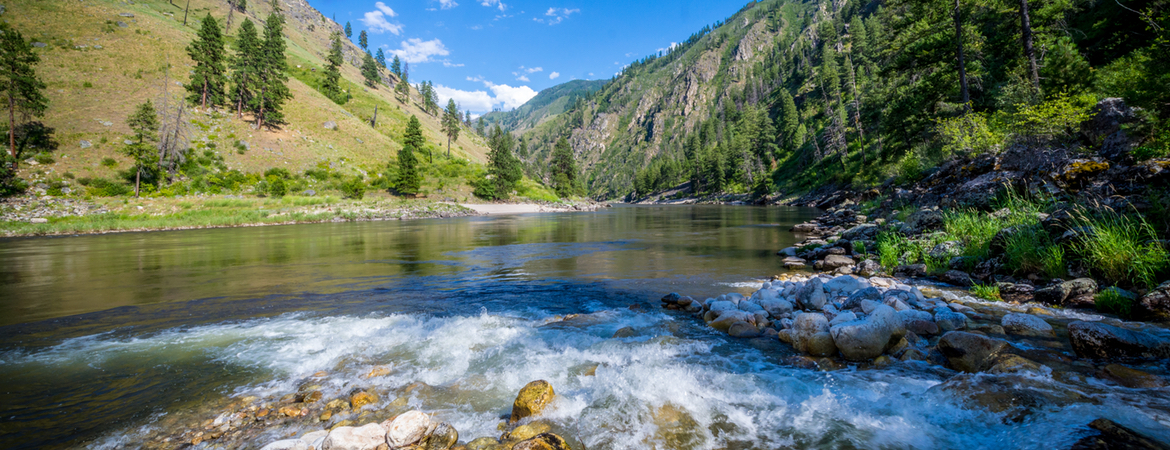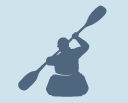An Introductory Guide to River Lingo
River Vernacular- a language of its own!
From planning your trip, until the last day on the river, there is some river specific terminology (lingo) that pops up again and again. So whether you are planning your first Salmon trip, or your fifteenth, here’s a crash course on some of the commonly used terms surrounding river life.
Put-In:
The spot on the river where the trip begins; literally the location in which the boats are put in the water. At the put-in, you will find Team Canyons, ready to welcome you to a glorious 6-day trip of epic scenery, fun whitewater, and wonderful camaraderie. Here we make introductions and go over essentials like how to pack your dry bag, what to expect throughout the day and river safety. For the Middle Fork, the typical put-in is located at Boundary Creek near Stanley, Idaho. However, if the river is too high or too low for us to put in at Boundary Creek we will put in at Indian Creek, a backcountry ranger station within the Wilderness, 25 miles downstream from Boundary Creek (only accessible by backcountry plane, boat or foot). For the Main Salmon, the put-in is at Corn Creek near Salmon, Idaho.
Take-out:
The point at which the boats and gear are unloaded and taken out of the water or the point at which the trip ends. Our Middle Fork take-out is at the confluence of the Middle Fork and Main Salmon Rivers near Salmon, Idaho. The Main Salmon take-out is at Carey Creek near Riggins, Idaho.
Shuttle:
The drive between the put-in and the take-out. If you drive your own vehicle to the river, you will need to have your car “shuttled” from the put-in to the take-out, so that it is waiting for you when you finish the trip. We do offer a shorter shuttle option for our trips. Our friendly office staff can discuss various options with you if you are interested. #208-634-4303
Oar Rig:
These rafts make up the majority of our floating caravan. Oar rigs carry lots of gear, and people too, creating a surprisingly luxurious and effortless way to experience the river. The guide rows the boat while you take in the sights.
Paddle Raft:
Rather than the oar raft, where only the guide is rowing, the paddle raft involves the participation of all passengers. Under the direction of the guide, paddle rafters work together to drive the boat down the river and through the rapids – No previous experience necessary!
Ducky:
A fun term used for our inflatable kayaks, which come in both a one-person and a two-person option! We love that these small crafts allow for guests of all experience levels, to enjoy the river under their own power, whether in calm flatwater or splashing through the rapids. Read more about our small crafts and why we think they are so awesome, here!
Sweep:
Queen of the Middle Fork, the sweep boat is our largest raft at 22 feet long and carries a majority of the groups’ gear. Dating back to the late 19th century, the sweep scow is different from the traditional oar raft in that its oars are located at the bow and stern and are called sweeps. The sweeps are used to drive the boat side to side across the current, rather than to row it forward and backward. Momentum is the name of the game with this boat and slowing it down can be tricky. Guiding the massive Sweep boat through technical whitewater is no small task, and our skilled guides get some serious kudos for their sweep skills!
Eddy:
An area of slow-moving or flat water on the river, generally along the edge of shore or behind a rock. Eddy’s are the best places to stop moving downstream, without taking the boats out of the water. If you need to take a break, or we want to stop on shore to point out some flora, or fauna, visit some hot springs, or camp, we will “catch an eddy” or “eddy out.”
Ferry:
No, we’re not talking about the motorized kind. On the river, to ferry is to go from one side of the river to the other, crossing the current at an angle, without going too far downstream. Whether you’re in a raft, a ducky, a hardshell kayak, a canoe, or a SUP, ferrying is a useful skill for navigating the river. It allows you to cross from one side of the river to the other, quickly, and without losing much ground. It can also be handy in rapids, moving to avoid obstacles.
Groover:
Last but not least, this is one of the most important items of gear that we bring with us on any trip – our portable toilet! Set up at camp in the most scenic (and private) locations, most guests, after 6 days of grooving, don’t want to use an indoor bathroom again. For the backstory of the Groover read here.
Do you have river lingo you’ve been wondering about, or think there’s an important term we missed? Let us know, we’d love to hear from you!
We also have more about daily river life, camping in style, and boat options on our website.
Similar Posts by The Author:
- Offbeat Interview Series with Hatcher
- Offbeat Interview Series with Jamie
- Offbeat Interview Series with Anneke
- Offbeat Interview Series with Ren
- Offbeat Interview Emily









